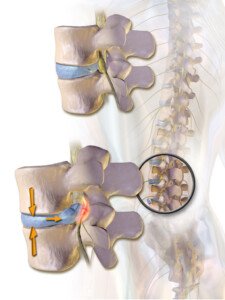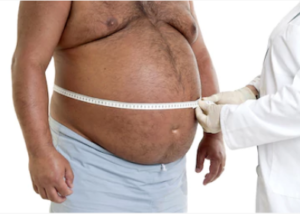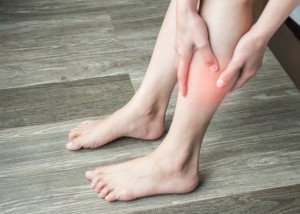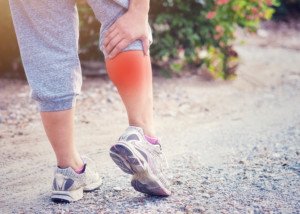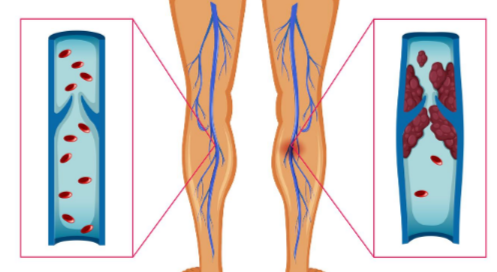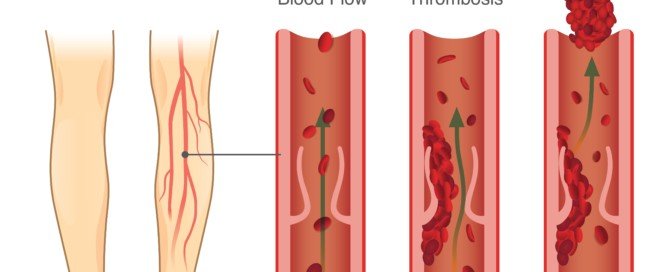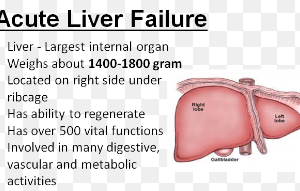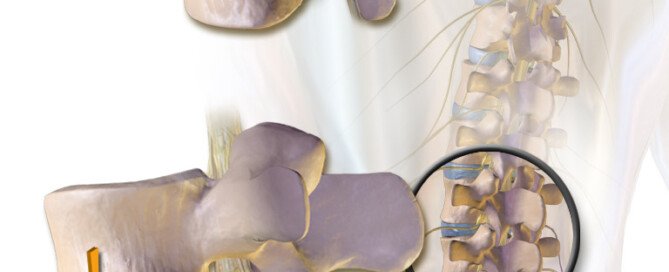Can Obesity in Your Child Cause High Blood Pressure?

If your child is overweight, this is more than a matter of self-esteem. It’s a matter of high blood pressure.
Even if an obese child can play tag, jump on a trampoline and ride a bike, high blood pressure is a real threat to his or her body.
Obesity is a major risk factor for hypertension. This dangerous condition doesn’t care how old — or young — the victim is.
This single fact alone is why it’s NEVER okay, NEVER acceptable, for a child to be clinically obese.
This means at least 20 percent over his or her ideal weight relative to height.
Even for children who are overweight but not in the obese range, this needs to be addressed, as “just a little chubby” is often a gateway to obesity, which can then lead to morbid obesity.
The Scourge of Obesity in Children
“Obese children are at risk for high blood pressure, early cardiac (heart) disease, type 2 diabetes, injuries, sleep apnea and social problems with peers,” explains Lisa Lewis, MD, a board certified pediatrician in Fort Worth, Texas, and author of “Feed the Baby Hummus, Pediatrician-Backed Secrets from Cultures Around the World.”
“This does not mean ‘all’ obese children will have these problems, but the risk is significantly higher.
• Childhood obesity is a well-established epidemic in the U.S.
• Thirty percent of very overweight adolescents have obesity associated with high blood pressure and also have other risk factors.
• The prevalence of premature heart disease in young adulthood will more than triple from five percent to 16 percent for currently big adolescents when they reach 35 years.
Promoting Healthy Habits Is Not Body Shaming

Freepik.com, Racool_studio
- This isn’t about “fat shaming.”
- It’s about hypertension shaming.
- High blood pressure needs to be shamed because it kills so many people.
“We see high blood pressure in obese children commonly in the clinic, starting around school age,” says Dr. Lewis.
“Typically obese toddlers won’t have a problem with high blood pressure, but blood pressure must be checked to ensure this is not a problem.
“If obesity related blood pressure is not critical, steps are taken to ensure the child does not diet (deprive themselves of food) to lose weight, but rather, learn to eat healthy to stop the excessive weight gain.
“The treatment plan for obesity in children and obesity related complications such as high blood pressure entails a diet of fresh fruits, vegetables, low-fat meats and dairy, healthy grains and increased fiber.
“Sugar drinks should be eliminated or at the very least reduced to once per week as a treat.”
This isn’t about teaching your child to embrace their body. It’s about teaching your child to embrace the concept of HEALTH and FITNESS.
- Serve up more salad and less ice cream to your children.
- Learn to say “No.”
- Learn to ignore the pestering and whining for cookies and the balking at apples and yogurt.
Read it again: Obesity can cause high blood pressure in kids!
Having 20+ years’ experience, Dr. Lewis completed her pediatrics residency at Texas A&M University Health Science Center, Scott and White Memorial Hospital. For two years afterward she was assistant professor in the department of pediatrics at Texas A&M University Health Science Center.
 Lorra Garrick has been covering medical, fitness and cybersecurity topics for many years, having written thousands of articles for print magazines and websites, including as a ghostwriter. She’s also a former ACE-certified personal trainer.
Lorra Garrick has been covering medical, fitness and cybersecurity topics for many years, having written thousands of articles for print magazines and websites, including as a ghostwriter. She’s also a former ACE-certified personal trainer.
.
Top image: Freepik.com/jcomp
Does Coumadin (Warfarin) Prevent DVT 100% of the Time?
Can Coumadin (Warfarin) prevent DVT’s 100% of the time or can these dangerous blood clots still form and go to the lungs and become life-threatening?
How Is a Blood Clot in Children Diagnosed?

Children can get blood clots called deep vein thromboses. These are emergencies and need prompt treatment. How are they diagnosed?
Does a Large DVT Always Cause Symptoms?
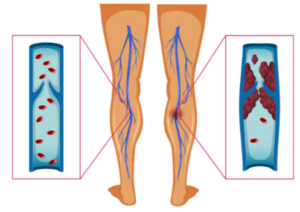
Can you actually have a large blood clot (DVT) growing inside you yet not have any symptoms at all?
When a DVT causes symptoms, they typically are calf pain or cramping, swelling in the affected area and redness.
Perhaps you’ve read that half of DVT’s don’t present with symptoms.
But what about large DVT’s?
“A large DVT in a proximal vein (popliteal, femoral, iliac veins) most often will be symptomatic with at least edema and perhaps pain,” says Seyed-Mojtaba Gashti, MD, a board certified vascular surgeon with Broward Health Medical Center in Florida.
Popliteal = behind the knee
Femoral = main artery of thigh
Iliac = pelvic vein
“Some people can have duplicate femoropopliteal veins and even IVC [major vein that goes into the heart], and if they develop a large DVT in one of the two veins, they may not be symptomatic.
“Others may have developed significant collaterals in the past, perhaps from an old DVT, and again may not present with significant symptoms.”
Collaterals refer to development of additional veins to compensate for deficient veins.
“In one study, about 300 patients in the SICU, asymptomatic for DVT, were scanned and 7.5% had major proximal DVT.
“An orthopedic patient cohort was studied pre- and post-surgery. All were asymptomatic for DVT; 2.5% of patients pre-op had proximal DVT and over 16% post-op.”
Of course, it’s logical to wonder how many of these asymptomatic deep vein thromboses would have eventually began producing symptoms if they were not discovered, and therefore not treated.
Dr. Gashti continues, “So you can see that a significant number of even proximal DVTs can remain asymptomatic.
“The question is what is the significance of not treating these patients and should we study all of them?
“These are surgical patients; but to know the exact number of asymptomatic DVTs, a large number of people need to be randomly studied!
“The most common symptoms of large symptomatic DVTs in the acute setting are pain and swelling [edema].
“Discoloration may occur later as the result of postphlebitic syndrome.
“Interestingly in another study where patients who had symptomatic, confirmed DVT in one limb, 5% had proximal DVT in the asymptomatic limb.”

Dr. Gashti specializes in the diagnosis and treatment of vascular disease including abdominal and aortic aneurysm. He received his medical degree from University of New England College of Osteopathic Medicine and has been in practice for more than 20 years.
 Lorra Garrick has been covering medical, fitness and cybersecurity topics for many years, having written thousands of articles for print magazines and websites, including as a ghostwriter. She’s also a former ACE-certified personal trainer.
Lorra Garrick has been covering medical, fitness and cybersecurity topics for many years, having written thousands of articles for print magazines and websites, including as a ghostwriter. She’s also a former ACE-certified personal trainer.
.
Top image: vecteezy.com
Best Way to Prevent Blood Clots when on Birth Control
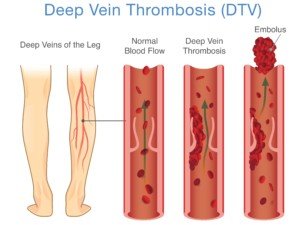
Blood clots are life-threatening and can result from using birth control pills. Here is the best way to help prevent these DVT’s from forming.
A woman who takes estrogen-based birth control needs to be aware of the signs of a blood clot in the leg (deep vein thrombosis).
Such a blood clot can break apart and in seconds travel to the lungs and block off inhaled oxygen, causing quick death.
Or, in less life-threatening cases, it will cause warning symptoms that can give the patient enough time to get to the emergency room for successful treatment.
“Birth control in and of itself renders a risk for the development of DVT,” says Paul Lucas, MD, surgeon with the Vascular Center and director of the Vascular Laboratory at Mercy Hospital in Baltimore.
“The estrogen component of the oral contraceptive pill is the causative risk. The progestin-only pills don’t convey that risk.”
Prevention of Blood Clots While on Birth Control
Dr. Lucas says, “The best prevention is to talk to your doctor and see if and what is the best option for you.”
Dr. Lucas urges women on birth control pills to stay active and exercise to help prevent the development of a deep vein thrombosis.
In addition, make sure the following are solidly in place to help prevent a deep vein thrombosis while on birth control:
-Maintain a healthy body weight. This is best accomplished, by far, by incorporating strength training into your life, along with cardio on days separate from the weight workouts. Avoid diet pills, “fat burner” pills and other gimmicks.

Freepik
-Keep well-hydrated. To make drinking water easier, add a few slices of lemon and a little Stevia as a natural sweetener.
-Don’t sit for extended periods of time; get up and move periodically.
Every TV commercial break, do some yoga, pacing, lunges, planks or march in place.
-Avoid garments that compress the pelvic area.
 Dr. Lucas leads a team of vascular surgeons and technologists who specialize in the diagnosis and treatment of patients with diseased blood vessels.
Dr. Lucas leads a team of vascular surgeons and technologists who specialize in the diagnosis and treatment of patients with diseased blood vessels.
 Lorra Garrick has been covering medical, fitness and cybersecurity topics for many years, having written thousands of articles for print magazines and websites, including as a ghostwriter. She’s also a former ACE-certified personal trainer.
Lorra Garrick has been covering medical, fitness and cybersecurity topics for many years, having written thousands of articles for print magazines and websites, including as a ghostwriter. She’s also a former ACE-certified personal trainer.
.
Top image: Shutterstock/solar22
Can Chronic Heart Failure Be Missed by an MRA?

Is it possible for a magnetic resonance angiogram (MRA) to miss detecting chronic heart failure?
The MR angiogram is typically used to measure the function of one’s heart.
An MR angiogram is a type of MRI: magnetic resonance imaging. An MRA of the heart doesn’t just show what things look like; it shows how things function.
“An MRA can detect congestive [or chronic] heart failure by showing that the heart is either not relaxing properly and is stiff, which is diastolic CHF, or may show decreased pump function, which is systolic CHF,” explains Dr. Sameer Sayeed, a cardiologist at ColumbiaDoctors of Somers, NY.
The MRA procedure will not miss these issues. It takes about an hour and requires that the patient be injected with a dye so that the physician can visually read contrast in the image.
“The MRA may also show fluid in the lungs and pleural spaces which indicate acute heart failure,” says Dr. Sayeed.
The patient’s head is entirely inside the MRI “tube,” and some patients will have an anxiety attack while others might doze off between instructions from the MRI tech to periodically hold their breath.
Some Symptoms of Congestive or Chronic Heart Failure
– Chest pain
-Shortness of breath
-Swollen feet and/or legs
-General undue fatigue
-Rapid pulse
-Persistent cough with pink-tinged or white phlegm
-Swollen abdomen
-Appetite suppression
-Nausea
-Reduced alertness
-Sudden weight gain (fluid retention)
Stress MRA
Dr. Sayeed says that a stress MRA can show normal or abnormal cardiac function while the patient is at rest as well as with cardiac stress.
This highly sensitive test will not miss problems.
If the results of this test are normal, “then the warranty period is about 3-5 years depending on the number of risk factors and lifestyle,” says Dr. Sayeed.
Risk factors for congestive heart failure include high blood pressure, coronary heart disease, heart attack, diabetes, irregular heartbeats, untreated sleep apnea, drinking, viruses and congenital defects.

Dr. Sayeed performs echocardiograms and stress tests at the Midtown Manhattan and Westchester offices at Columbia Doctors. He is also trained in cardiac CT imaging.
 Lorra Garrick has been covering medical, fitness and cybersecurity topics for many years, having written thousands of articles for print magazines and websites, including as a ghostwriter. She’s also a former ACE-certified personal trainer.
Lorra Garrick has been covering medical, fitness and cybersecurity topics for many years, having written thousands of articles for print magazines and websites, including as a ghostwriter. She’s also a former ACE-certified personal trainer.
.
Top image: Shutterstock/designer491
Source: mayoclinic.com/health/heart-failure/DS00061
Why the Pain All Over Your Body Gets Worse with Depression
Have you noticed that depression makes the pains in your body worse? This is especially true if your body often hurts all over.
How Long Can Your Zero Calcium Score Last Before It Goes Up?

You’ve just learned your calcium score is zero, so now it’s time to learn how to keep it at zero. How long can it last before it might go up?
MUST You Have General Anesthesia for Herniated Disc Surgery?
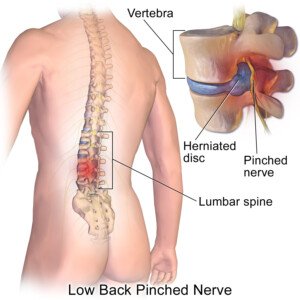
Are you facing surgery for a herniated disc and are fearful of general anesthesia? Can this procedure be done under regional or even local?
Physical Therapy for Disc Herniation Causing Pain? Solutions
